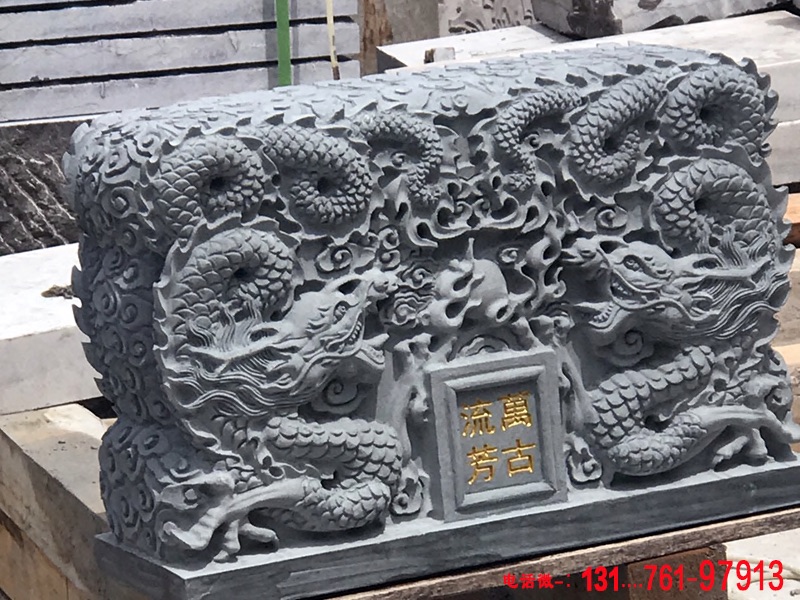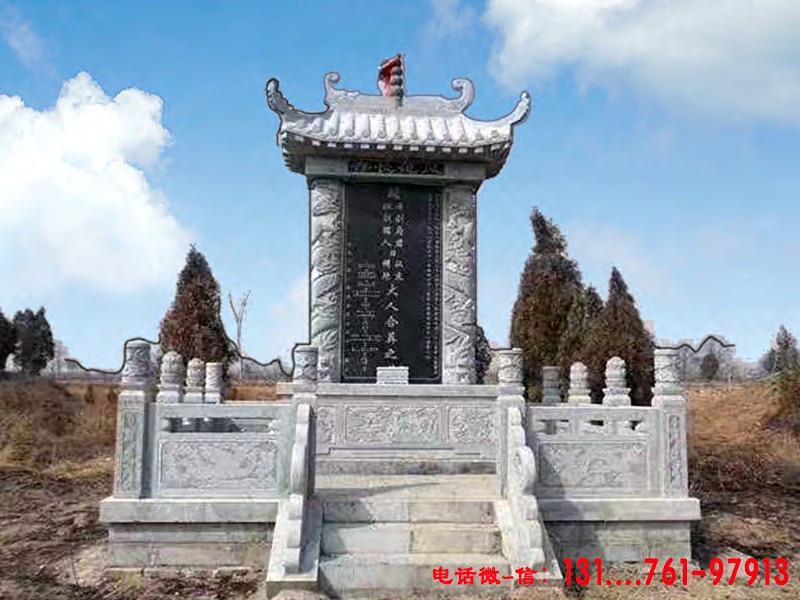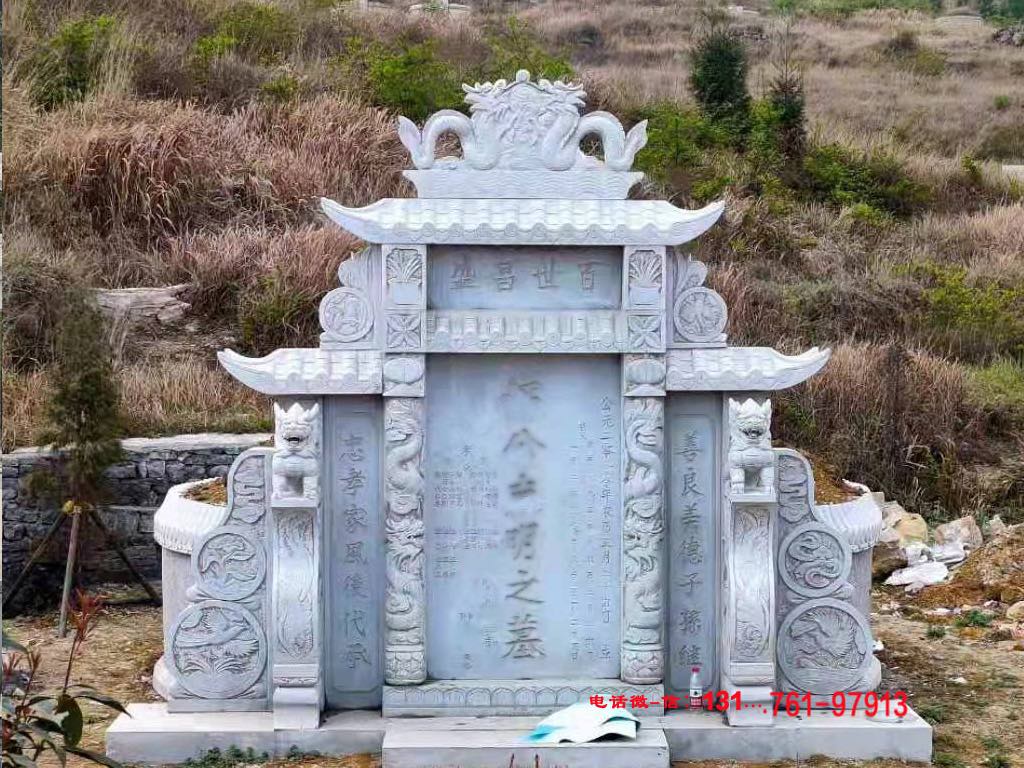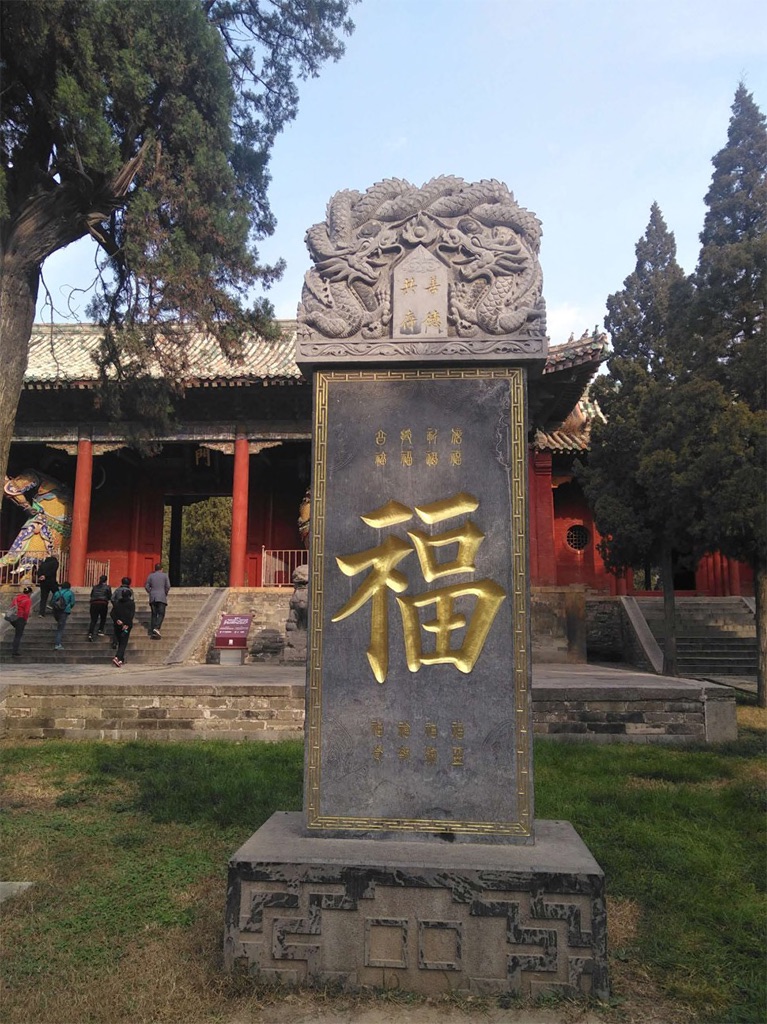- A+
PAGEPAGE 1 墓碑序言范例全集 1.墓碑铭文全集,墓碑铭文中的nangsan怎么写。 墓碑铭文举例 1、父亲铭文:尚寿大德、中国太公、贤考忌海、为志明树立榜样。 他出生于旧历1912年7月11日,正值饥荒和战乱时期; 2006年6月4日,他在新年、繁荣与和平的时刻来到了天堂。 私塾读了四年后,我不再读书,用我柔弱的肩膀,努力地去接近我的祖先。 我一生孜孜不倦地学习诗词书法,向子孙传授古代圣贤的美德。 当我十六岁的时候,我的祖先去世了,我的家庭背负着沉重的责任。 我十七岁的时候,家乡发生大旱,我摇摇晃晃地走了数百里,没有食物。 建国初期,任乡副乡长。 他忘记了个人利益,头脑清醒。 夫妻相敬相爱,寒暑相互扶持,高堂食粗而细事,养育子女吃苦受苦。 那些经历过艰难生活的人并不灰心。 他们年轻时失去父母,中年时失去母亲,壮年时失去配偶。 上天会眷顾那些勤奋、顽强、历经沧桑、安度晚年的人。 精读西游,善待人生; 通晓三国,做事严谨。 擅长颜柳书法,写对联赠亲友; 他满腹经济文章,喜欢通过签订合同来帮助邻居。 贤考活了九十五岁,古今罕见; 年轻一代对父辈、祖先的孝敬,哪怕持续一百多年。 碑文曰:无病终,永不忘德,寒暑祭祀,随季节来临。 铭记卓越功绩、灿烂辉煌、百年佳绩、永恒芬芳。 牢记重考,弘扬大道,修深善,天地广阔。 牢记贤考,保家卫国,小康富强,永远繁荣昌盛。 牢记仙考,神将重临圣地,你将重生富贵长寿。 2、我对不起我的父亲,他辛苦了一辈子。
我冠弱,但我愿意接受付老师的培训,在学校学习,在瓷城学习。 他年轻时就进公社,为群众劳动,夏天锄地,冬天干水利。 晚年,他继续努力工作。 我父亲的运气不好,推迟了他的婚姻。 经营家庭勤俭节约,生活狡猾。 关爱儿童,以身作则。 两男一女,长大了。 父德高如山。 不说谎,不欺骗。 善待他人,家庭成员和谐。 按摩、捏捏对所有人都有好处。 现在想起来,我的眼泪就流了下来。 我永远不会忘记这次充满感情的聚会! 3. 2. 墓碑格式和碑文书写 墓碑格式通常由三部分组成:标题、注释和碑文。 1、头颅上应写明死者生前的职务、职业等,也可以省略部分内容。 2、注记主要记载立碑者所称死者的头衔和姓名。 例如“先考察王军**先生的坟墓”。 3、签名应注明立碑者的身份和姓名。 立碑时间可写,也可不写。 碑文自古以来就是丧葬仪式的重要组成部分,记录死者的一生。 扩展材料 墓志铭 墓志铭通常由三部分组成:标题、注释和签名。 1、称谓 称谓一般由死者姓名和语种组成。 如《刘子侯墓志铭》。 2、注释具有普遍性,墓志铭注释的内容包括三个方面。 第一:简要介绍死者的主要生活经历; 第二:评价死者的主要成就和社会价值; 第三:写下立碑的意义,同时对逝者的不幸去世表示哀悼。
3、签字时注明立碑单位名称、作者姓名、书写日期。 需要指出的是,有些墓志铭的标题下已写有立碑单位名称或作者个人姓名,因此签字时注明书写日期即可。 功德碑。 古代歌颂私德的私德碑,如今已基本消失。 然而今天,为了表彰一些先进个人,比如捐资建学校,也为他们立碑纪念。 这堪称当代功勋丰碑。 此类功德碑通常由题名、注释、署名三部分组成。 1、称号 称号通常由功人姓名和文名组成。 例如“某某先生捐资修建学校纪念碑”。 2、注释描述何时、何地、为何、谁做了什么善事、好事。 同时,注释中还需要说明对立碑单位或个人的感谢之情。 3、签字时应署立碑者姓名,并注明立碑日期。 3.如何为墓碑写序言? 你能提供一个很好的例子吗? 铭文是指刻在碑上的文字。 这种文字是专门为刻碑而写的。 有些文章虽然刻在碑上,但不能称为碑文,因为它们不是为了立碑而写的。 铭文的体裁有文字、铭文、序。 设置标题时,取决于包含哪些形式。 或直接题为某碑,或题为某碑碑文,或题为碑序,或题为碑序。 没有固定的格式,有的不包含铭文。 等词好了,就写文章的标题吧。 墓碑是铭文的一种。 这类铭文是歌颂死者、歌颂人的,并不涉及成神、显灵等稀奇古怪的事情。

写这种文章往往过于奉承。 中国文学史上有两位墓碑书写大师,一位是汉代蔡邕,一位是唐代韩愈。 蔡邕曾对吕子谦和马日碑说:“我在世上有许多铭文,人人都感到羞愧,但郭有道却无愧于他的出现!” 因为只有《郭台碑》赞扬了他,其他碑文并非全部颂词都不是他的,所以可见他所创作的墓碑大多是对人们的过度恭维。 韩愈写了《刘子厚墓志铭》,迂回批评柳宗元参加王叔文变法派。 虽然这种批评都是基于韩愈保守的个人偏见,很不公平,但作为碑文,他采取了褒贬并举的方法,打破了只赞扬人的善良而不赞扬人的缺点的传统做法,这是值得推广的。 总之,无论是赞扬还是批评,诚实是高尚的,公平平衡是美丽的。 古人的墓碑、墓志铭都是定制的。 碑多呈长方形,上有螭头,腿上有龟。 某朝某官员的墓碑,碑头用篆书书写,称为“篆额”。 墓志铭较小,多为方形,用石刻而成,上面写有某位官员或某人的墓志铭,称为“书皮”。 有了“印额”和“书皮”,碑文、碑文前面就不用刻题名了。 墓碑的标题。 墓碑铭文称为序,后为碑文碑文格式范例 墓碑,前为碑文; 墓志铭称序,后称铭文,后称铭文。 墓志铭或墓碑称为铭文或墓碑,有铭文或碑而无铭文的称为铭文或墓碑。 它被称为墓志铭。 有的有铭文却无志向; 有的只有志名或碑名,但物品齐全。 墓碑铭文系统一般包括姓名、籍贯、出身、经历、文章著作、死亡时间,然后某年某月葬于某地,最后是碑文。
墓志铭的内容还包括姓名、世系、籍贯、事迹、寿命、卒年、大致后裔、埋葬时间、埋葬地点,最后是题词。 碑文为一般褒义,多为韵体,可以是三字体、四字体、五字体、七字体或韵体。 墓碑和墓志铭的内容大致相同,但都力求简洁,墓碑更加华丽。 墓碑前有翰林学士李公、省学堂秘书裴敬、李翰林,字白,字太白。 以诗闻名,被召入翰林院。 才华横溢,名声天下,占据国子监,其他人将不再争夺第一。 后因共谋得罪,自获释后,漂流江南,卒于宣城,葬于屠青山下。 李阳冰的诗集序言,行文粗犷,线条流畅。 我愿游过大江,路过他的坟墓,爱他的才华,强化他的气场,尝尝他的酒味,知道什么适合他,在他的坟墓上立碑。 又说:先生,你已得天地了! 否则的话,与常人有何不同! 或曰:太白精衰,故名太白,故狱名“流仙”,不也如此吗? 因此,这首诗的格调高远,立意深远。 仿佛天外诸神仙人齐聚驾鹤,欲见浮空之态。 看灰尘中的米粒,昆虫睫毛的混乱,细菌的束缚和蹂躏。 我也有了一些认识。 行至并州,在军中结识郭汾阳。 为了逃避惩罚,他得到了重赏。 后来,汾阳凭借功绩请求赎回翰林院,并获许免遭处决。 其报应。 他经常与裴将军一起向叔公舞剑。 他上书说:“如白愿出将军家。” 他的文笔高远,精神坚强。 原作世间罕见,又恐失传,遂依序传下。 大同之初,文宗命翰林学士赞为“三绝诗”,《宫之诗》与将帅舞剑、张旭昌的草书为“三绝诗”。 老天赐予你的天赋,一定会给你带来同样的灵气。
贤人和谐,龙虎和谐,知者可言,专人所知。 我夫在古时名声赫德,有官谥甚少。 先前诗所提及的有谢立部、何水部、陶彭泽、包灿钧等。 唐代以诗着称的有王江宁、宋考素、魏苏州、王又成、杜员外等。 被文学称为的有陈十一、苏嗣业、袁容舟、萧素草、韩礼部等。 以德闻名者,有元禄山、羊道洲。 直接叫来的就是魏文珍和狄良公。 号称忠厚忠厚的人,有颜鲁公、段太尉。 以武功着称的有李卫公、鹰公。 号称秀才、秀才、秀才、秀才、秀才、秀才、秀才的人,是虞的暗监。 唐朝得民,这里便繁荣起来。 《翰林诗》亦称其诗之一。 尝了当涂,参观了翰林故居,去浮屠寺成城。 翰林僧人自有《游何间不相见》诗:“贡山无问候,酒舟归去”。 味道不够,份量也重。 它是一个宝藏,应该用来向那些了解它的人提供知识。 又在溧阳县得一纸,名翰林所书《刘尊先生书》。 又游元代江山寺,见翰林赞致公曰:“水中月不可夺,吾以刀尺量之,扇陈于。” 作者真诚地准备了这篇简短的文章,附于此。 会昌三年二月中旬,景从北水草堂南行,至长江左岸,过墓地下,越过青山。 他把头发抹了两遍,不忍心去。 他们与原蒲州鄄城县尉李绍一起,身着官服祭奠他的坟墓。 我向墓左毕元佑询问,他竟在萨苏留县准备了丝器、酒食来祭祀公。 志公没有孙子,只有两个孙女。 其中一位嫁给了刘全,两人都是农民。 据说,二孙女已经有五六年没有上坟了,因为她通知了都督李俊都杰,要求毕元友免去劳役,专心打扫卫生。 笑! 如果你享有如此高的声誉,你的未来为何会如此渺小? 谢公旧井,新墓一角。

青山白云尽是荒凉。 巨大的竹拱门、木拱门,犹如龚卓洛。 他的名字永垂不朽。 这是祭文,为封元佑而写。 他还在碑上写道:无论你多么高贵,也很难保住你的名字。 故重名轻官,只立李翰林十五字碑。 4、铭文举例 在我国,自汉代以来,刻铭文的习俗逐渐盛行。 铭文几乎随处可见,一切都可以铭文。 有山川碑、城碑、宫殿碑、桥碑、坛井碑、家庙碑、风俗碑、祸福碑、墓碑、庙宇、器物等。 前人践行,后人仿效。 中国的名胜古迹实际上构成了“碑林多”的独特民族特色。 因此,碑刻成为一种有用的文学体裁,用途广泛。 碑的种类繁多,碑文风格也各具特色。 概括起来,可分为六类:(一)功德碑。 这种纪念碑是用来歌颂活着的人们的。 旧功碑一般有三种形式。 有的完全用韵书写,如公元前219年秦始皇登上泰山之巅时,李斯刻石赞颂他的武艺和武功。 有的有序、颂,散文有序,诗有颂,如李白的《武昌载汉君去思碑序》。 有的全是散文,没有颂歌等诗句,如《敦煌太守裴令碑》。 这种碑文是为活着的人而写的。 解放后,我国没有人立过这样的纪念碑。 然而,在海外华侨聚居的地方,仍然有不少功勋纪念碑。 (2) 寺碑。 解放后,迷信被废除,不再有人为神鬼立碑。 然而,我国有许多古老的寺庙建筑,是不可多得的名胜古迹,需要修复或重建。 在建造过程中,竖立了纪念碑来记录这些事件,以供后人参考。
但现在此类碑文应侧重于描述古迹的兴衰历史、确定古迹的依据以及重建过程中的相关事项。 (3)墓碑。 旧式墓碑有两种类型:i)姓名碑。 墓碑正面刻有墓中人的姓名、立墓碑的人、立墓碑的时间。 这些纪念碑大部分是由死者的后裔竖立的。 还有学生为老师立墓碑,为岳父岳母立女婿墓碑,为妻子立墓碑,为丈夫立墓碑,为丈夫立墓碑,为夫妻立墓碑。 下面简单介绍一下墓碑上的死者姓名: ii) 刻有死者生平的墓碑介绍。 这种碑文一般包括姓名、籍贯、出身、经历、著述、逝世日期、埋葬地点,最后还有碑文,多为押韵,可以是三韵、四韵、五韵、七韵,也可以是押韵。 其中大部分是死者的后裔请别人写的。 如韩愈的《刘子侯墓志铭》。 还有比较简洁的碑文和简短的墓志铭介绍死者。 显出某某家的主人的精神(对祖父) 显出祖妾XX夫人的精神(对祖母) 显出某某家的主人的精神(对父亲) 显出精神某某禁忌之主(对父亲) 显现某妾老子之灵(对母亲) 显现某妻妾之灵(对母亲) 父亲之灵- 公公(对公公) 因此,岳母老太太的精神(对公公)(对公公) 岳母的精神大小姐的精神(对婆婆) 某某家老妾的精神(对婆婆) 某某老爷的精神(对老师) 精神亡夫某某的精神(对丈夫) 亡妻某某的精神(对妻子) 某某先生的好兄弟的精神(对伴侣) 精神某某君子的某某好兄弟(对伙伴或弟子)例一:忌祖考察某太子、某太傅王墓,孝孙发旺**年*月立例2忌讳先验XX先生墓例4张**年*月立例5**省**县副县长已故父亲***孝女墓立于年*月**年*。 例6***91***先生之墓——***已故父亲***于**年**月**日出生于**省**。 县**乡**村人,**年**月参加革命工作,**年**月加入中国共产党,生前担任***职务,逝世于**年。 **年**月**因病去世碑文格式范例 墓碑,享年**岁。
孝子年年*月*日2韦素源①鲁迅墓韦君素源。 你出生于1902年6月18日,去世于1932年8月1日。呜呼,伟大的才华和伟大的野心在短时间内陷入困境②。 文渊失去了英雄,他的辉煌将被永远哀悼。 其弟从吾③、游精农④、姬野⑤发言; 鲁迅写道。 说明:鲁迅的作者是周树人,我国伟大的思想家、革命家、文学家。 生于1881年,卒于1936年。 注:①魏素源——作家,安徽霍邱县人,1902年生,1932年逝世,无名公社社员,鲁迅的好友。 翻译过果戈理的《大衣》等书。 ②Er 短年——E 表示贫穷和苦难。 魏素媛只活了三十岁,可以说是短暂的一生。 ③从进——指魏从进,安徽霍邱县人,无名社会员,翻译家。 ④金农——台金农,安徽省霍邱县人,无名学会会员、翻译家。 三王同昭先生墓志铭 山东省文化局王同昭先生出生于山东诸城。 生于1897年农历正月初八,卒于1957年11月29日,享年六十岁。 他一生酷爱文学。 在文学创作上,他取得了巨大的成功。 代表作品有《一叶》、《黄昏》、《山雨》、诗歌《童心》、散文《雪集》等。王先生是新世纪以来中国文坛的著名人物之一。 5月4日运动。 王先生一生致力于文化教育事业。 北京中国大学毕业后,历任北京中国大学出版系教授、主任,上海文学社《文学》主编,上海暨南大学教授,开明书店编辑、教授在山东大学。

王先生出生于封建地主家庭,但受到进步思想的影响,接受了资产阶级民主革命思想。 解放后,在中国共产党的关怀下,向先生的革命思想进一步提高,从而赢得了更多人民的爱戴。 曾任全国人大代表、山东省人大代表、中国文学艺术界联合会委员、中国作家协会理事、民盟中央委员、济南市委主任,山东省人民政府委员兼文化教育厅副厅长,山东省人民政府委员。 文化处处长,山东省文学艺术界联合会主席,山东省中苏友好协会副会长。 他不仅为人民文学的发展做出了巨大的贡献,也为培养和造就年轻一代做出了巨大的贡献! 他的革命热情和事业坚韧值得后人学习和赞扬。 我写这篇文章作为纪念。 注:王同昭先生葬于济南市金牛山陵园。 墓地位于济南市北郊金牛公园内。 这是山东省文化局为先生墓书写的碑文。 (4)纪念碑。 这类铭文主要是针对。 5. 父母合葬的铭文示例。 铭文是指刻在碑上的文字。 这种文字是专门为刻碑而写的。 有些文章虽然刻在碑上,但不能称为碑文,因为它们不是为了立碑而写的。 铭文的体裁有文字、铭文、序。 设置标题时,取决于包含哪些形式。 或直接题为某碑,或题为某碑碑文,或题为碑序,或题为碑序。 没有固定的格式,有的不包含铭文。 “等等”这个词。 可以直接写到文章标题中。 墓碑是铭文的一种。
这类铭文是歌颂死者、歌颂人的,并不涉及成神、显灵等稀奇古怪的事情。 写这种文章往往过于奉承。 中国文学史上有两位墓碑书写大师,一位是汉代蔡邕,一位是唐代韩愈。 蔡邕曾对陆子谦、马日碑说:“我天下碑文甚多,众人皆耻。顾名思义,凡是写在各种碑上作制的文字,都称为碑文。我国历史悠久,春秋战国时碑就消失了,当时的碑,如宫殿的测光碑、祠堂的祭祀碑、旁边的下棺碑等墓碑上没有刻文字,后来有人刻了相应的文字,渐渐地就形成了各种各样的铭文。铭文有广义和狭义之分。狭义的铭文仅指为制作墓碑而书写的文字。碑文,广义的碑文是指碑上刻的所有文字。我国从春秋战国时期开始发展,一开始就立碑了,但古代宫殿里的碑文却没有。上面有铭文,仅用于捕捉太阳的影子来计算时间; 而古代祠堂的石碑上没有铭文,而是用来拴牛羊祭祀的。 墓碑只是木柱,上面开有孔以供通过。 (1) 墓碑 墓碑通常由三部分组成:标题、注释和签名。 1、标题要写死者生前的职务、职业等,有的也可以省略。 2、注释主要记载死者的头衔和立碑者的姓名。 例如“先考察王军**先生墓”。 3. 碑文应标明立碑者的身份。 姓名。 您可以写也可以不写纪念碑的竖立时间。
(2)墓志铭 墓志铭通常由标题、注释和署名三部分组成。 1、标题 标题一般由死者姓名和流派名称组成。 如《刘子侯墓志铭》。 2、注释具有普遍性,墓志铭注释的内容包括三个方面。 首先是简单介绍死者的主要生活经历; 二是评价死者的主要成就和社会价值; 三是写下立碑的意义,同时对死者不幸去世表示哀悼。 3、签字时注明立碑单位名称、作者姓名、书写日期。 需要指出的是,有些墓志铭的标题下已写有立碑单位名称或作者个人姓名,因此签字时注明书写日期即可。 (三)功德碑 古代歌颂私德的私德碑,如今已基本消失。 然而今天,为了表彰一些先进个人,比如捐资建学校,也为他们立碑纪念。 这堪称当代功勋丰碑。 此类功德碑通常由题名、注释、署名三部分组成。 1、称号 称号通常由功人姓名和文名组成。 例如“某某先生捐资修建学校纪念碑”。 2、注释描述了何时、何地、为何、谁做了什么善事、好事。 同时,注释中还应说明对立碑单位或个人的感谢之情。 3、签字时应署立碑者姓名,并注明立碑日期。 一般来说,碑文要求诗文朗朗上口。 叙事简单,歌词真诚,讨论有力。 只有这样,才能称得上是上乘。

碑文可以流传后世,所以在颂扬功德、描述人事时,一定要客观公正,不要夸大事实,也不要散布谎言。 不管是赞扬还是批评,最重要的是不忘现实,最美的是公平、平等。 铭文的格式并没有太多的硬性规定。 特别是,铭文的内容因作者而异。 因此,我们今天写碑文时,一定要努力创新,结合时代的需要。 我们决不能死守旧体制、玩火。 铭文方法(示例) 1. 表现某位王子的祖先的精神(对祖父) 2. 表现某某妻子的祖先的妃子的精神(对祖母) 3. 表现王子的精神某家的灵(对父亲) 4. 揭示某某先生的灵(对父亲) 5. 揭示老妾的灵(对母亲) 6. 揭示小妾的灵. So-and-so (to the mother) 7. Reveal the spirit of the father-in-law (to the father-in-law) ) 8. The spirit of a certain old lady named Yue Kao (to the father- in-law) 9. The spirit of a certain lady in the mother-in-law (to the mother-in-law) 10. The spirit of an old child of a certain clan of the concubine-in-law (to the mother-in-law) 11. Master The spirit of Lord XX (to the teacher) 12. The spirit of my late husband XX (to my husband) 13. The spirit of my late wife XX (to my wife) 14. The spirit of my dear friend XX. Types of inscriptions In my country, the custom of carving inscriptions has gradually become popular since the Han Dynasty. Inscriptions can be found almost everywhere and everything can be inscribed. There are monuments of mountains and rivers, monuments of cities, palaces, bridges, altars and wells, family temples, customs, misfortunes, merits, tombs, temples, and objects. monument, etc.
The predecessors practiced it and the later generations imitated it. China's scenic spots and historic sites actually constitute a unique national characteristic of "lots of steles". Therefore, inscriptions have become a useful literary style with a wide range of uses. There are many types of inscriptions, and the genres of the inscriptions have their own characteristics. To sum up, they can be divided into six categories: There are many types of inscriptions, and the genres and characteristics of the inscriptions are also different. To sum up, the inscriptions can be roughly summarized as follows. (1) Monument of merit! 1. Content requirements Merit monuments are mainly to praise people who were still living in the world at that time. (2) Tombstones Tombstones are the most common inscriptions. This type of inscriptions praises the deceased and praises the person, and does not involve strange things about gods and spirits. There are two main types of tombstone inscriptions. One type only indicates the identity of the deceased in the tomb, and most of them are erected by relatives of the deceased; the other type of tombstone not only indicates the identity of the deceased, but also briefly introduces the life achievements, merits and demerits of the deceased. This type of tombstone is also called an epitaph. For example, Han Yu's "Epitaph of Liu Zihou" and Zhang Pu's "Tombstone of Five People" (4) Monument Monuments are mainly to commemorate great figures or major historical events who have made great contributions to the progress of human civilization. This kind of monument is usually Built by state agencies or social groups. Such as "Monument to the People's Heroes" and "Monument to Lin Gong Zexu". (3) Memento stele The memento stele is mainly used to record the more important tombstones at that time. 1) Why do you need to sleep for a long time when you are alive? You will sleep forever after death. 2) I am dead and I will burn paper if I have something to do. 3) When you see this line clearly. 6. The trial reading of parents' inscriptions is over. If you want to read or download, please click to buy > Beiguan School Changge's parents' inscription example. The unforgettable kindness of nurturing, the love of children who are constantly cut off. They are smart and capable and never give up. Kindness is like a mother. Feelings of heaven. e68a847a64331 Died young and was in great pain. The breeze and the bright moon will forever miss you. Who picked me up when I fell and gave me a kiss at the painful place - my mother. My maternal love lasts for eternity. She is blessed with good fortune and longevity. She is a typical example. She lives a hard-working life and has a simple family. Wind, teach children well, treat others treacherously, be as virtuous as the family, leave your name to future generations, be immortal, be fragrant through the ages, have a graceful appearance, the pines and cypresses are evergreen, drive back to Penglai, ride a whale back to the west, fools will wither, cranes will return to China, treasures Wu Xingchen and Feng Luo Changkong have left many, many things to their children. They have given you too little, too little. Mom and Dad, forgive me for using this ordinary tombstone to express my endless thoughts and eternal remembrances. I am poor and humble, but my aspirations are firm. If you accumulate good deeds and become virtuous, you should enjoy the prosperity and protection of your descendants, and have a successful career; if you inscribe it on a monument, you will be honored in future generations. The country is for the people and the people can leave behind an example of hard work and virtue, which can be called a model for our peers. Inheriting the revolutionary family tradition, the legacy will be a lasting reminder to future generations. The kindness will be remembered by future generations. The model will be left in the world for many years. His voice and smile will always be remembered in the heart. He taught his children to cultivate and study and become a great talent. Farewell once , his words and deeds turned into his children's deeds, he asked Sun Wenwu to continue his good deeds and longevity, and his kind words and deeds will be beneficial to future generations. He endured hardships for forty years and traveled for nine days. His benevolence and benevolence were passed down for thousands of years. He worked hard and practiced hard for a hundred years. Be frugal and self-disciplined, take care of your children and raise them, your kindness will be unforgettable. My father has returned honorably, but I shed tears of regret. He manages the household diligently, raises his children and supports his grandchildren. His merits are fulfilled, and his descendants mourn. I am ashamed that I have not repaid the kindness of nurturing. When I come to Dapuyan, the heaven and earth will leave the harmonious wind and blessings to my descendants. I am immortal, my descendants will maintain my career forever, I will never forget my parents, my ambitions will always be pursued, and my filial piety will always be there. I will be enlightened by the sun and the moon. 7. Complete collection of inscriptions, format of inscriptions, writing of inscriptions, how to engrave inscriptions. Inscriptions refer to the words engraved on the menhirs. 。
This kind of writing is specially made for engraving tablets. Although some articles are engraved on the stele, they cannot be called inscriptions because they were not written for the purpose of erecting the stele. The genre of inscriptions has text, inscriptions, and order. When setting up a title, it depends on what forms are included. It may be titled directly as a certain stele, or as an inscription on a certain stele, or as a title with a preface to the stele, or with a preface to the inscription. There is no fixed format, and some do not include an inscription. Wait for the word, just write the title of the article. A tombstone is a type of inscription. This type of inscription praises the deceased and praises the person, and does not involve weird things such as becoming a god or appearing as a spirit. Writing this kind of article is often overly flattering. There are two masters of tombstone writing in the history of Chinese literature, one is Cai Yong of the Han Dynasty and the other is Han Yu of the Tang Dynasty. Cai Yong once said to Lu Ziqian and Ma Ri Stele: "I have many inscriptions on the world, and everyone is ashamed, but Guo Youdao is worthy of his appearance!" Because only the "Guo Tai Stele" praises him, and the other inscriptions are not All of the eulogies are not his, so it can be seen that most of the tombstones he created were overly complimentary to people. Han Yu wrote "Liu Zihou's Epitaph", criticizing Liu Zongyuan's participation in Wang Shuwen's reform group in a roundabout way. Although this criticism was all based on Han Yu's conservative personal prejudice and was very unfair, as an inscription, he adopted a method of both praise and blame, breaking the traditional practice of only praising people's goodness and not their shortcomings, which is worthy of promotion. In short, regardless of whether it is praise or criticism, it is noble to be truthful, and it is beautiful to be fair and balanced. 8. The format of inscriptions Since ancient times, inscriptions can be said to have come in various forms. The following is just a brief introduction to the writing of several commonly used inscriptions with relatively stable formats. (1) Tombstone Tombstone usually consists of three parts: header, annotation, and signature.

1. On the head of the head, you should write down the position and occupation of the deceased during his lifetime. You can also omit some of them. 2. Annotation: The annotation mainly states the title of the deceased and the name of the deceased by the person who erected the monument. For example, "First examine the tomb of Mr. Wang Jun**." 3. The signature should indicate the identity and name of the person who erected the monument. The time for erecting the monument can be written or not. (2) Epitaph Epitaphs often consist of three parts: title, annotation and signature. 1. Title The title generally consists of the name of the deceased and the name of the genre. Such as "Liu Zihou's Epitaph". 2. Annotations are general and the content of annotations on epitaphs consists of three aspects. The first is to briefly introduce the main life experience of the deceased; the second is to evaluate the main achievements and social value of the deceased; the third is to write down the significance of erecting the monument, and at the same time express condolences for the unfortunate passing of the deceased. 3. When signing, indicate the name of the unit that erected the monument, the name of the author, and the date of writing. It should be pointed out that in some epitaphs, the name of the unit that erected the monument or the personal name of the author has been written under the title, so it is enough to indicate the date of writing when signing. (3) Merit Monuments Ancient private virtue monuments that eulogized private virtues have basically disappeared today. However, today, in order to commend some advanced individuals, such as donating funds to build schools, monuments are also erected to commemorate them. This can be called a contemporary merit monument. This type of merit monument usually consists of three parts: title, annotation, and signature. 1. Title The title usually consists of the name of the meritorious person and the name of the language. For example, "Mr. So-and-so donated money to build a school monument." 2. The annotation describes when, where, why, and who did what good deeds and good deeds. At the same time, the annotation should also explain the gratitude of the unit or individual who established the monument.
3. The signature should be signed with the name of the person who erected the monument, and the date of erection of the monument should be signed. 9. Modern epitaph examples jhfgf2199 epitaph example epitaph example A hundred years of turmoil and great ambitions. Jun Ye Gulin, formerly known as Guo Qingyuan, also known as Guo Tao, is Han nationality and a native of Guanxian County, Shandong Province. He was born on Yimao day, Jisi month, Jiayin year, and died on Bingxu day, Yiwei month, Xinmao year, at the age of ninety-eight. Ye Zhengzheng was born with great achievements and great fame. The man is determined to leave his hometown and join the army. A talented young man, he graduated from a normal school and taught in the first high school in Tangyi, Shandong. In 1937, the Japanese invaded China in full force. In the winter of the same year, he and his comrades walked to Yan'an and faced the national calamity. In September of the following year, he entered the Yan'an Anti-Japanese University; in December, he joined the Communist Party of China. In 1942, he volunteered to join the Iron Army and the Army, and then returned to his hometown to fight guerrillas.He moved to northwest Shandong, Hebei, Shandong and Henan, and northeastern Jiangxi. He fought fiercely on the battlefield and was stained with blood.
- 我的微信
- 这是我的微信扫一扫
-

- 我的微信公众号
- 我的微信公众号扫一扫
-




